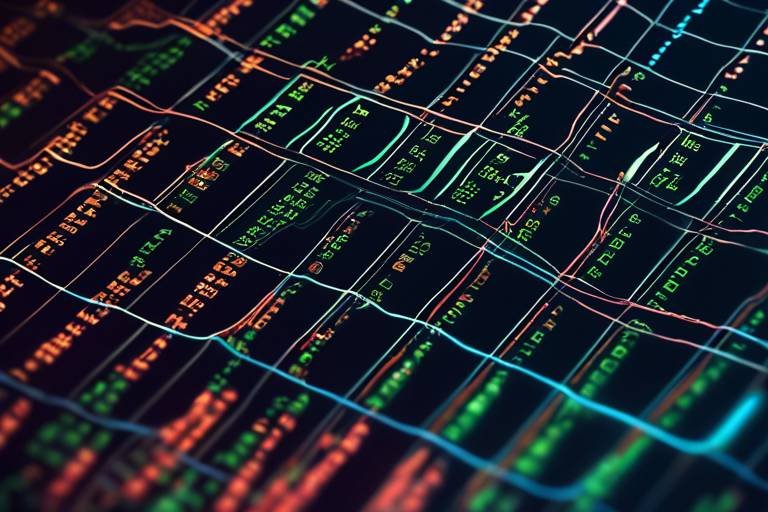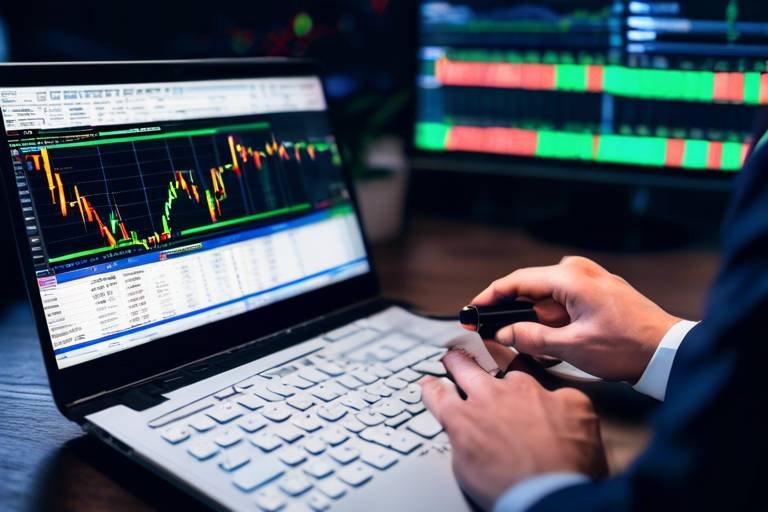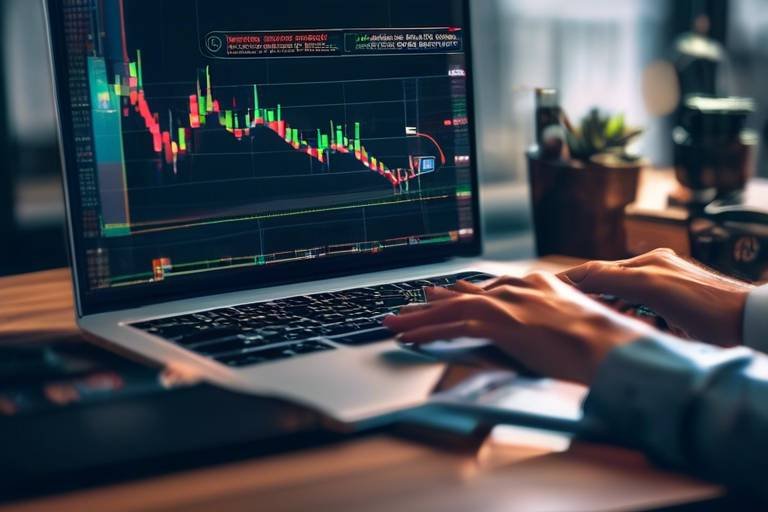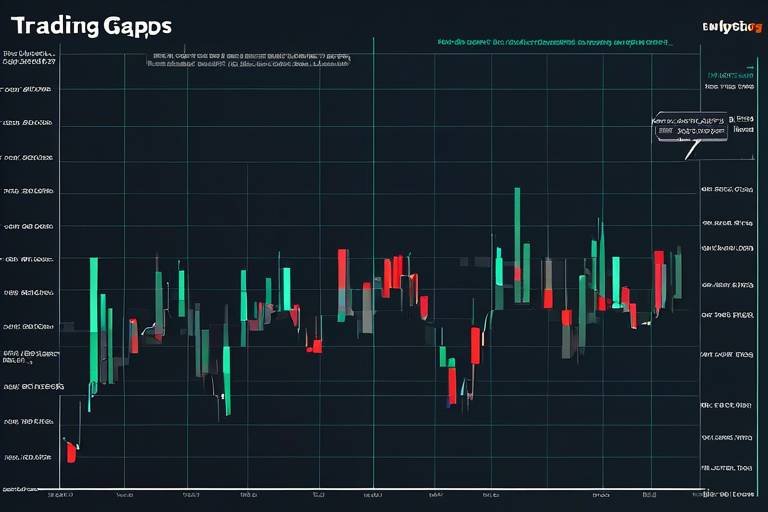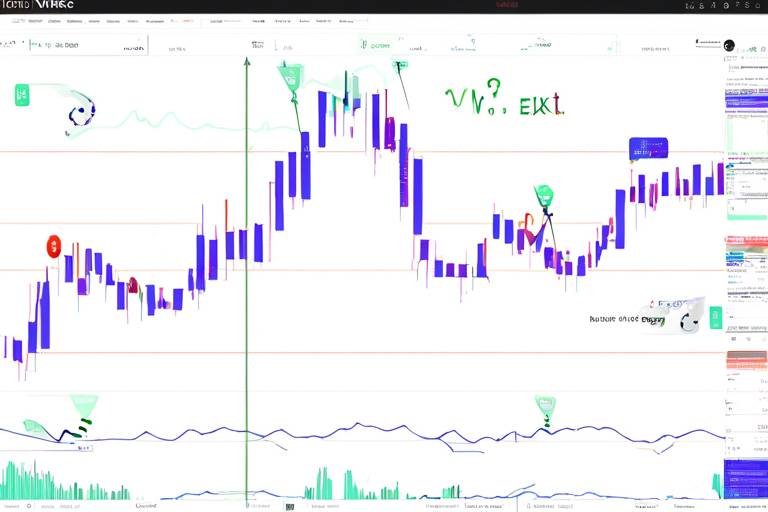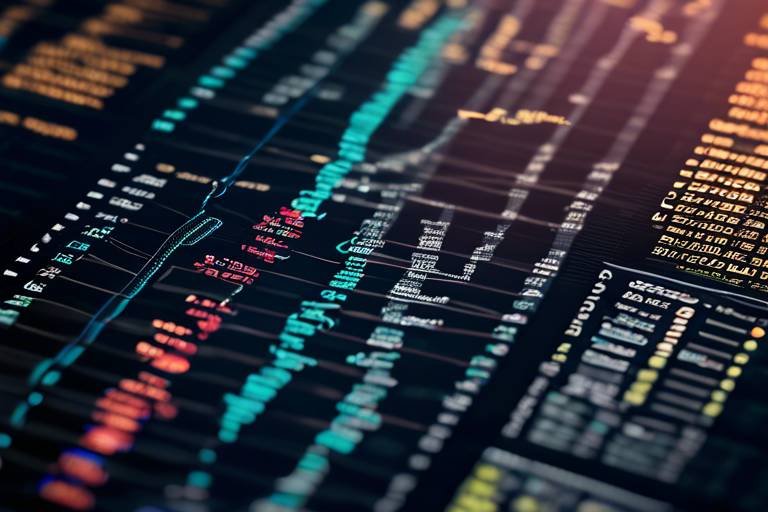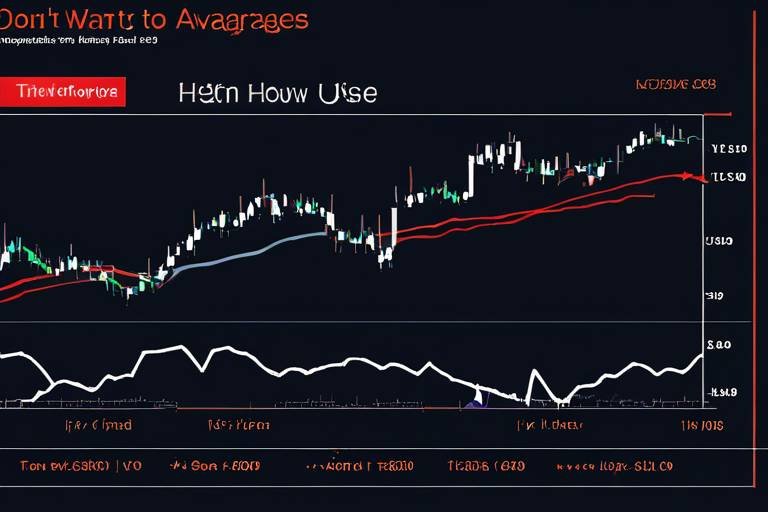How to Use Patterns for Day Trading Cryptocurrencies
In the fast-paced world of cryptocurrency trading, understanding and utilizing patterns can significantly enhance your trading strategy. The cryptocurrency market is notorious for its volatility, and while this can be daunting, it also presents numerous opportunities for savvy traders. By recognizing specific patterns, traders can make informed decisions, potentially increasing their profitability. But what exactly are these patterns, and how can they be effectively used? Let’s dive deeper into the fascinating world of day trading patterns.
Patterns in trading can be likened to the breadcrumbs left behind by market participants. These breadcrumbs help us navigate the often chaotic landscape of price movements. Think of them as clues in a mystery novel; each one reveals a bit more about the market's sentiment and potential future movements. Whether you're a seasoned trader or just starting, understanding these patterns is crucial for making timely and profitable trades.
One of the most important aspects of day trading is recognizing that patterns are not just random occurrences; they are manifestations of collective market psychology. Traders' emotions—fear, greed, and excitement—play a significant role in price movements. By learning to read these patterns, you can gain insights into when to enter or exit a trade. It’s like getting a sneak peek at the script of a play before it unfolds on stage.
Moreover, patterns can help traders develop a structured approach to trading. Instead of relying solely on gut feelings, traders can use a combination of technical analysis and patterns to create a robust trading plan. This structured approach can reduce emotional decision-making and lead to more consistent results. In essence, patterns serve as a compass, guiding traders through the unpredictable waters of cryptocurrency trading.
In summary, mastering trading patterns is not just about recognizing shapes on a chart; it's about understanding the underlying principles that drive market movements. By incorporating these patterns into your trading strategy, you can enhance your decision-making process, potentially leading to greater profitability in the ever-evolving world of cryptocurrencies. So, buckle up and get ready to explore the exciting patterns that can revolutionize your trading game!
- What are candlestick patterns? Candlestick patterns are formations created by the movement of prices over a specific time frame, providing insights into market sentiment.
- How can I identify a head and shoulders pattern? A head and shoulders pattern consists of three peaks: a higher peak (head) between two lower peaks (shoulders), indicating a potential trend reversal.
- What is the significance of support and resistance levels? Support levels indicate where prices may stop falling, while resistance levels indicate where prices may stop rising, helping traders make informed decisions.
- How does volume analysis enhance trading strategies? Volume analysis helps confirm price movements; spikes in volume often precede significant price changes, providing traders with valuable information.
- Can I use indicators alongside patterns? Yes! Combining indicators like RSI and MACD with pattern analysis can improve trading accuracy and validate signals.

Understanding Candlestick Patterns
Candlestick patterns are the bread and butter of day trading in the cryptocurrency market. They serve as visual representations of price movements over a specific time frame, offering traders a glimpse into market sentiment and potential future price actions. By analyzing these patterns, traders can make informed decisions, enhancing their strategies and increasing their chances of profitability. Think of candlestick patterns as the mood rings of the market; they change colors based on the emotions and behaviors of traders.
Each candlestick provides crucial information: the opening price, closing price, highest price, and lowest price during a given period. This data can be interpreted in various ways, allowing traders to identify bullish or bearish trends. For instance, a long green candlestick indicates strong buying pressure, while a long red candlestick suggests selling pressure. But don't just take these patterns at face value; it's essential to consider them in the context of the overall market trend.
Some of the most common candlestick patterns include:
- Doji: Represents indecision in the market, often signaling a potential reversal.
- Hammer: Indicates a bullish reversal after a downtrend.
- Shooting Star: Signals a bearish reversal after an uptrend.
- Engulfing Patterns: A strong reversal signal, where a smaller candle is engulfed by a larger one.
Recognizing these patterns requires practice, but once mastered, they can significantly improve a trader's ability to predict price movements. Imagine you’re trying to read the emotions of a crowd at a concert; the candlestick patterns give you insights into whether the crowd is excited and ready to surge (bullish) or whether they are losing interest and starting to leave (bearish).
Furthermore, it's essential to combine candlestick patterns with other forms of analysis to confirm your trading decisions. For instance, looking at volume can provide additional context. A bullish candlestick pattern accompanied by high trading volume is generally more reliable than one with low volume. This is because high volume indicates strong interest and commitment from traders, making the pattern more significant.
In summary, understanding candlestick patterns is a fundamental skill for anyone looking to navigate the volatile waters of cryptocurrency trading. They not only help in identifying potential entry and exit points but also in gauging market sentiment. So, the next time you look at a chart, remember that each candlestick tells a story. Learn to read it, and you may just find the key to unlocking your trading potential.

Chart Patterns to Watch
When diving into the world of day trading cryptocurrencies, recognizing chart patterns can be your secret weapon. These patterns serve as visual cues that can indicate potential market movements, helping you make informed decisions in a fast-paced environment. Imagine you're a detective, piecing together clues to solve a mystery; each chart pattern is a vital clue that can lead you to the right trading opportunity. Whether you're a seasoned trader or just starting, understanding these patterns can significantly enhance your trading strategy.
Among the myriad of patterns, two stand out for their reliability: the head and shoulders and various triangle formations. Each of these patterns tells a unique story about market sentiment and potential price action. For instance, the head and shoulders pattern is often seen as a harbinger of trend reversals, while triangles typically indicate periods of consolidation before a breakout. By familiarizing yourself with these patterns, you can better anticipate market movements and adjust your strategies accordingly.
The head and shoulders pattern is one of the most recognized formations in technical analysis. It consists of three peaks: the left shoulder, the head, and the right shoulder. This pattern typically signals a reversal of the prevailing trend, making it crucial for traders to identify. Picture this: as the price rises and forms the left shoulder, it peaks at the head, only to decline before forming the right shoulder. This formation suggests that the buyers are losing strength, and a shift to selling pressure is imminent. Recognizing this pattern early can help traders exit positions or open short positions to capitalize on the impending downtrend.
On the flip side, the inverse head and shoulders pattern signals a potential bullish reversal. This pattern forms in a downtrend and consists of three troughs: the left shoulder, the head, and the right shoulder. As the price dips to form the head, it creates a buying opportunity as traders anticipate a reversal. Think of it as a phoenix rising from the ashes; just when it seems the market is down and out, this pattern hints at a comeback. Traders can use this formation to identify strategic entry points, allowing them to ride the wave of the upcoming bullish trend.
Triangles are another set of patterns that traders should keep an eye on. There are two main types: ascending triangles and descending triangles. An ascending triangle is characterized by a flat upper trendline and a rising lower trendline, indicating a potential breakout to the upside. Conversely, a descending triangle has a flat lower trendline and a descending upper trendline, often signaling a bearish breakout. These formations indicate periods of consolidation, where the market is building pressure before a significant price movement occurs. Recognizing these formations can help traders prepare for the impending breakout, allowing them to position themselves advantageously.
In summary, understanding these chart patterns can dramatically improve your trading strategy. They provide essential insights into market sentiment and potential price movements, allowing traders to make informed decisions. Remember, the key to successful trading lies not just in recognizing these patterns but also in combining them with other analyses to enhance your trading accuracy.
- What are chart patterns?
Chart patterns are formations created by the price movements of an asset on a chart. They help traders predict future price movements based on historical trends. - How reliable are head and shoulders patterns?
Head and shoulders patterns are considered one of the most reliable indicators of trend reversals in technical analysis. - What is the significance of volume in pattern recognition?
Volume plays a crucial role in confirming the strength of a chart pattern. A pattern accompanied by high volume is generally more reliable.

Head and Shoulders Pattern
The is a classic formation in technical analysis that signals a reversal in the market trend. It typically appears after an uptrend and consists of three peaks: the left shoulder, the head, and the right shoulder. Understanding this pattern is crucial for traders as it can provide a clear indication of when to exit long positions or enter short ones. Imagine you're hiking up a mountain, reaching a peak (the head), and then descending—this is the journey the market takes before it changes direction.
To visualize this, let’s break down the components of the head and shoulders pattern:
| Component | Description |
|---|---|
| Left Shoulder | The first peak that forms after an uptrend, followed by a decline. |
| Head | The highest peak that forms, representing the market's highest point before the decline. |
| Right Shoulder | The final peak, which is lower than the head, followed by another decline. |
Once the right shoulder forms, the price typically breaks below the neckline, which is the support level drawn across the lows of the left shoulder and the head. This break is often seen as a confirmation of the pattern, suggesting that the market sentiment has shifted from bullish to bearish. Traders often look for a volume increase at this point, as it can indicate strong selling pressure.
But why should you pay attention to this pattern? Well, it’s all about timing. Recognizing the head and shoulders pattern allows traders to make informed decisions about when to enter or exit trades. For instance, if you spot the formation early, you can set your stop-loss orders just above the right shoulder to minimize potential losses. Conversely, if the price breaks below the neckline with significant volume, it may be time to consider shorting the asset.
It's also important to note that there are variations of this pattern. For example, the inverse head and shoulders pattern indicates a potential bullish reversal and is formed in a downtrend. This shows that understanding these patterns can be a game changer in your trading strategy. Always remember, trading is not just about following patterns blindly; it’s about understanding the psychology of the market and making informed decisions based on the information at hand.

Inverse Head and Shoulders
The inverse head and shoulders pattern is one of the most powerful indicators in a trader's toolkit, signaling a potential bullish reversal in a downtrend. Picture this: you're watching a stock chart that seems to be on a downward spiral, and suddenly, you spot this distinctive pattern forming. It’s like finding a hidden treasure in a sea of charts! The structure consists of three troughs, where the middle trough (the head) is lower than the two outer troughs (the shoulders). This formation not only indicates a reversal but also presents a fantastic opportunity for traders to enter the market at a lower price before a potential upward surge.
To understand the significance of this pattern, let’s break it down into its components:
- Left Shoulder: This forms when the price declines, followed by a rally that peaks at a certain level.
- Head: After the left shoulder, the price drops again, creating a deeper trough before rallying once more.
- Right Shoulder: The price declines again, but this time not as deep as the head, leading to another rally that ideally breaks above the neckline.
Once the right shoulder forms, traders look for a breakout above the neckline, which is drawn by connecting the peaks of the left and right shoulders. This breakout is often accompanied by increased volume, further validating the pattern. Imagine it like a rubber band: the more you stretch it, the more tension builds until it finally snaps back. In trading, this 'snap' can lead to significant price movements.
However, it’s crucial to remember that while the inverse head and shoulders pattern is a reliable indicator, it’s not infallible. Traders should consider other factors, such as market conditions and volume trends, to increase the probability of success. Integrating this pattern with additional technical analysis tools can help confirm the reversal and provide a clearer picture of market dynamics.
In summary, the inverse head and shoulders pattern is a beacon of hope for traders caught in a bearish market. By recognizing this formation and understanding its implications, you can position yourself to take advantage of potential bullish moves. So, the next time you see this pattern forming, don’t just sit back—take action and prepare to ride the wave of an upward trend!

Triangles: Ascending and Descending
Triangles are fascinating formations in the world of day trading, especially when it comes to cryptocurrencies. They represent a period of consolidation where the price is essentially taking a breather before making a significant move. Think of it like a coiled spring, ready to unleash its energy. There are two main types of triangle patterns that traders should keep an eye on: ascending triangles and descending triangles. Each of these patterns has its own unique characteristics and implications for future price movements.
An ascending triangle typically forms during an uptrend and is characterized by a horizontal resistance line at the top and an upward-sloping support line at the bottom. This pattern suggests that buyers are becoming increasingly aggressive, pushing the price higher while sellers are trying to hold the price down. As the price approaches the resistance level, the tension builds, and traders often anticipate a breakout to the upside. The key takeaway here is to watch for a breakout above the resistance line, which could signal a strong bullish move.
On the other hand, a descending triangle usually appears in a downtrend. This pattern features a horizontal support line at the bottom and a downward-sloping resistance line at the top. Here, sellers are dominating the market, pushing the price down while buyers are trying to step in at the support level. As the price approaches the support line, the pressure mounts, and traders often expect a breakout to the downside. It’s crucial to be cautious, as a breakdown below the support line can lead to significant price declines.
To further illustrate these concepts, let’s take a look at a simple comparison table:
| Pattern Type | Formation | Market Sentiment | Breakout Direction |
|---|---|---|---|
| Ascending Triangle | Higher lows and horizontal resistance | Bullish | Upward |
| Descending Triangle | Lower highs and horizontal support | Bearish | Downward |
Recognizing these triangle patterns can be incredibly advantageous for day traders. They not only indicate potential breakouts but also help traders set their stop-loss orders effectively. For instance, in an ascending triangle, placing a stop-loss just below the most recent low can help mitigate risks if the breakout fails. Similarly, for a descending triangle, a stop-loss just above the recent high can protect against unexpected upward movements.
In summary, understanding ascending and descending triangles is crucial for any day trader looking to navigate the volatile cryptocurrency market. These patterns don’t just tell a story; they provide essential clues about future price movements. So, the next time you see these formations on your charts, remember: they could be the key to unlocking significant trading opportunities!
- What is the significance of triangle patterns in day trading? Triangle patterns indicate periods of consolidation and can signal potential breakouts, making them crucial for traders to identify.
- How can I identify an ascending triangle? Look for higher lows and a horizontal resistance line. The price should be consistently making higher lows while testing the resistance level.
- What should I do if a breakout occurs? If a breakout occurs, consider entering a trade in the direction of the breakout, but always use stop-loss orders to manage risk.

Support and Resistance Levels
In the fast-paced world of day trading, understanding is crucial for making informed decisions. These levels act like invisible barriers on a price chart, guiding traders in determining where to enter or exit a trade. Think of support levels as a safety net that prevents prices from falling further, while resistance levels act as a ceiling that keeps prices from rising too high. Recognizing these levels can be the difference between a profitable trade and a costly mistake.
Support levels are typically identified at previous lows on the chart, where buying pressure has historically outweighed selling pressure. Conversely, resistance levels are found at previous highs, where selling pressure has outpaced buying. By marking these levels on your charts, you can visualize potential turning points in the market. For example, if a cryptocurrency is approaching a support level, traders might anticipate a bounce back up, while approaching a resistance level might signal a potential pullback.
Moreover, the significance of these levels can change depending on market conditions. A support level that has been tested multiple times without breaking may become stronger over time. On the other hand, if a support level is breached, it can turn into a resistance level, providing traders with valuable insights into market dynamics. This phenomenon is often referred to as role reversal.
| Level Type | Description | Trading Implication |
|---|---|---|
| Support | Price level where buying interest is strong enough to prevent further decline. | Potential buying opportunity if the price approaches this level. |
| Resistance | Price level where selling interest is strong enough to prevent further increase. | Possible selling opportunity if the price approaches this level. |
To effectively utilize support and resistance levels in your trading strategy, consider incorporating them with other technical analysis tools. For instance, combining these levels with candlestick patterns can provide a clearer picture of potential price movements. If a bullish candlestick pattern forms near a support level, it may signal a strong buying opportunity. Conversely, if a bearish pattern appears near a resistance level, it could indicate a good time to sell.
In summary, mastering support and resistance levels is essential for any day trader looking to navigate the volatile cryptocurrency market. By paying attention to these levels and integrating them into your trading strategy, you can enhance your decision-making process and increase your chances of success.
- What are support and resistance levels? Support levels are price points where buying interest is strong enough to prevent further declines, while resistance levels are points where selling interest prevents further increases.
- How can I identify support and resistance levels? You can identify these levels by looking at historical price charts, noting where prices have previously reversed direction.
- Why are support and resistance levels important in trading? They help traders make informed decisions about when to enter or exit trades, improving the chances of profitability.
- Can support and resistance levels change? Yes, they can change based on market conditions. A support level can become a resistance level if it is breached.

Volume Analysis with Patterns
When it comes to day trading cryptocurrencies, understanding volume analysis is like having a secret weapon in your trading arsenal. Volume, in simple terms, refers to the number of units traded during a specific timeframe. But why is this important? Well, volume can provide crucial insights into the strength or weakness of a price movement. It’s not just about the price going up or down; it’s about how many traders are participating in that movement. Think of it as the heartbeat of the market—when the volume spikes, it's like the market is experiencing an adrenaline rush, signaling that something big is about to happen.
Integrating volume analysis with patterns enhances your ability to make informed trading decisions. For instance, if you spot a bullish pattern like the ascending triangle, but the volume is low, it might be a sign that the trend lacks conviction. Conversely, if the volume surges during the formation of a bullish pattern, it can validate the strength of the trend, suggesting that a breakout is likely. This relationship between volume and price movements is essential for traders looking to maximize their profitability.
To illustrate the importance of volume analysis, consider the following table which summarizes different volume scenarios and their implications:
| Volume Scenario | Implication |
|---|---|
| High Volume with Price Increase | Strong bullish sentiment, potential continuation of the trend. |
| High Volume with Price Decrease | Strong bearish sentiment, potential continuation of the downtrend. |
| Low Volume with Price Increase | Weak bullish signal, price may not sustain the upward movement. |
| Low Volume with Price Decrease | Weak bearish signal, price may not sustain the downward movement. |
It's also worth noting that volume spikes often precede significant price movements. Imagine you’re driving a car, and suddenly you notice the engine revving louder—this is akin to a volume spike in trading. It indicates that something is about to happen, whether it's a breakout or a reversal. By identifying these spikes in conjunction with established patterns, traders can gain a competitive edge. For example, if you notice a volume spike while prices are breaking out of a resistance level, it’s a strong indication that the breakout is legitimate and worth acting upon.
Moreover, combining volume analysis with technical indicators can further enhance your trading strategy. Indicators like the Relative Strength Index (RSI) and Moving Average Convergence Divergence (MACD) can help validate the signals provided by patterns and volume. For instance, if an RSI reading indicates that a cryptocurrency is oversold while you see a bullish pattern forming with increasing volume, it could be a perfect opportunity to enter a trade.
In summary, volume analysis is a vital component in the realm of day trading cryptocurrencies. By understanding how volume interacts with price movements and patterns, traders can make more informed decisions, ultimately leading to greater success in the ever-volatile crypto market.
- What is volume analysis? Volume analysis involves examining the number of units traded to understand market strength and trends.
- How does volume affect trading decisions? High volume can confirm trends, while low volume may indicate weak price movements.
- Can volume analysis be used with any trading strategy? Yes, it can enhance any trading strategy by providing insights into market dynamics.
- What indicators work well with volume analysis? Indicators like RSI and MACD complement volume analysis by validating signals from price patterns.

Volume Spikes and Trends
When diving into the world of day trading cryptocurrencies, one of the most crucial aspects to understand is the relationship between volume spikes and market trends. Volume, in essence, represents the total number of shares or contracts traded for a particular asset during a specific period. High volume often indicates strong investor interest, while low volume can suggest a lack of conviction in price movements. This is why recognizing volume spikes is like having a secret weapon in your trading arsenal!
Imagine you're watching a thrilling race. If one runner suddenly speeds up, you can't help but wonder what triggered that burst of energy. Similarly, a volume spike can signal that something significant is happening in the market. It could be news, a major buy or sell order, or even a shift in trader sentiment. By paying attention to these spikes, you can gain insights into potential price movements and make more informed decisions.
To illustrate, let’s consider a scenario where the price of Bitcoin has been fluctuating around $30,000. Suddenly, you notice a dramatic increase in volume, with thousands of Bitcoins changing hands within minutes. This could indicate that major players are entering the market, potentially pushing the price higher. Conversely, if you see a volume spike coupled with a price drop, it may indicate that traders are dumping their holdings, which could be a sign of a bearish trend.
Here’s a quick breakdown of how to interpret volume spikes:
- Increased Buying Volume: A surge in buying volume often precedes price increases. If you see this pattern alongside a bullish candlestick, it may be time to consider entering a position.
- Increased Selling Volume: If selling volume spikes and the price drops, it may signal a bearish trend. This could be your cue to exit a position or prepare for further declines.
- Volume Divergence: Sometimes, price may rise while volume decreases, indicating a potential reversal. This divergence can be a red flag for traders, suggesting that the momentum may not be sustainable.
Understanding the context of volume spikes is equally important. For instance, if a spike occurs during a significant news event or announcement, it’s likely to have a more profound impact on price than a spike in a quiet market. Therefore, always consider the bigger picture and the surrounding circumstances when analyzing volume trends.
Incorporating volume analysis into your trading strategy can enhance your decision-making process significantly. By combining volume spikes with other technical indicators and patterns, you can increase your chances of making profitable trades. For example, if you notice a breakout pattern accompanied by a volume spike, that’s a strong confirmation that the trend is likely to continue. On the other hand, if a breakout occurs with low volume, it may be a false signal, leading to potential losses.
In summary, volume spikes are not just random occurrences; they provide valuable insights into market sentiment and potential price movements. By keeping a close eye on these spikes and understanding their implications, you can navigate the volatile cryptocurrency market with greater confidence and precision.
- What is a volume spike? A volume spike refers to a significant increase in the number of shares or contracts traded for an asset within a short period, often indicating heightened interest or activity in the market.
- How can I use volume spikes in my trading strategy? By analyzing volume spikes alongside price movements and patterns, you can gain insights into potential market trends and make more informed trading decisions.
- Are volume spikes always a good sign? Not necessarily. While they can indicate strong buying or selling interest, it's essential to consider the context and other indicators to avoid false signals.

Using Indicators with Patterns
When it comes to day trading cryptocurrencies, relying solely on patterns can sometimes feel like navigating a ship without a compass. This is where technical indicators come into play, acting as your guiding star. By combining these indicators with the patterns you've identified, you can significantly enhance your trading accuracy and decision-making process. Think of it as having a well-equipped toolbox; each tool serves a unique purpose, and together, they help you build a solid trading strategy.
One of the most popular indicators to pair with your patterns is the Relative Strength Index (RSI). This momentum oscillator helps traders identify overbought or oversold conditions in the market. For instance, if you spot a bullish pattern, like an inverse head and shoulders, and your RSI indicates that the asset is oversold, it could be a strong signal to enter a trade. Conversely, if the RSI shows overbought conditions when you're looking at a bearish pattern, it might be wise to consider selling or at least tightening your stop-loss.
Another crucial indicator is the Moving Average Convergence Divergence (MACD). This indicator not only shows the relationship between two moving averages of a security's price but also helps traders identify potential buy and sell signals. For example, if you see a triangle pattern forming and the MACD line crosses above the signal line, it could indicate a bullish breakout is imminent. This convergence of pattern recognition and MACD signals can give you an edge in timing your trades.
Here’s a quick summary of how you might combine indicators with patterns:
| Pattern | Indicator | Signal |
|---|---|---|
| Inverse Head and Shoulders | RSI | Oversold condition suggests buying |
| Ascending Triangle | MACD | MACD crossover indicates bullish breakout |
| Head and Shoulders | RSI | Overbought condition suggests selling |
| Descending Triangle | MACD | MACD crossover indicates bearish breakout |
By integrating these indicators with your pattern analysis, you can create a more comprehensive trading strategy. However, it's essential to remember that no single indicator or pattern is foolproof. The cryptocurrency market is notoriously volatile, and unexpected events can lead to rapid price changes. Therefore, always ensure your strategies include risk management practices, such as setting stop-loss orders and diversifying your trades.
In conclusion, using indicators alongside patterns not only reinforces your analysis but also provides a more robust framework for making informed trading decisions. So, the next time you spot a pattern, take a moment to check your indicators. You might just find that perfect combination that leads you to a profitable trade!
- What are candlestick patterns?
Candlestick patterns are formations created by the price movements of an asset over time. They provide insights into market sentiment and can indicate potential future price movements.
- How do I identify support and resistance levels?
Support and resistance levels can be identified by looking at historical price points where the asset has reversed direction. These levels act as psychological barriers for traders.
- Can I rely solely on indicators for trading decisions?
While indicators are valuable tools, relying solely on them can be risky. It's best to use them in conjunction with patterns and other analysis methods for a well-rounded approach.
- What is the best trading strategy for beginners?
Beginners should focus on learning the basics of technical analysis, including patterns and indicators, while practicing risk management to protect their capital.
Frequently Asked Questions
- What are candlestick patterns and why are they important?
Candlestick patterns are visual representations of price movements over a specific time frame. They are crucial for day traders because they provide insights into market sentiment and potential price movements. By analyzing these patterns, traders can effectively identify entry and exit points, enhancing their trading strategies.
- How do I recognize a head and shoulders pattern?
The head and shoulders pattern consists of three peaks: a higher peak (head) between two lower peaks (shoulders). This formation signals a potential reversal in the market trend. To identify it, look for the left shoulder, followed by the head, and then the right shoulder. If confirmed, this pattern can be a strong indicator for traders to adjust their strategies accordingly.
- What is the significance of support and resistance levels?
Support and resistance levels are key concepts in day trading. Support refers to a price level where buying interest is strong enough to prevent the price from falling further, while resistance is where selling interest can halt price increases. Recognizing these levels helps traders determine optimal entry and exit points, as well as potential reversal zones in the market.
- How can volume analysis enhance my trading strategy?
Volume analysis is essential because it confirms trends and validates price movements. By observing volume spikes, traders can anticipate significant price movements. When a price movement is accompanied by high volume, it indicates strong market interest and can signal the strength of a trend, providing traders with a competitive edge.
- Can I use technical indicators along with pattern analysis?
Absolutely! Combining technical indicators like the Relative Strength Index (RSI) and Moving Average Convergence Divergence (MACD) with pattern analysis can significantly improve trading accuracy. These indicators help validate pattern signals, allowing traders to make more informed decisions and enhance their overall trading strategies.

